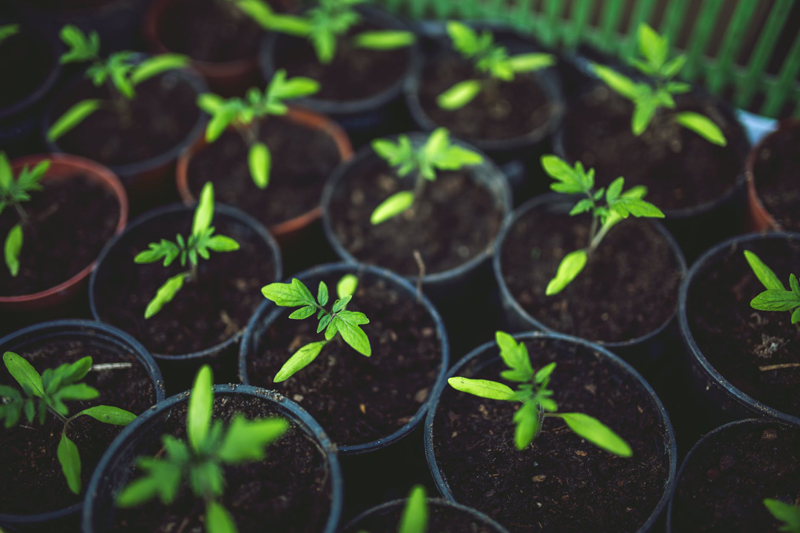Cleaning Garden Soil with Solarization

Solarization is an easy way to rid your garden of soil bound pests and disease. It can be accomplished with minimal monetary outlay, a little effort and a little time.
Solarization uses the sun to cleanse your garden soil. You will be using clear plastic to heat your garden soil for an extended period of time. Heating the soil in this manner will kill insect eggs, weed seeds, soil borne fungi, and leave you with healthy soil. You can use this process on any size plot, and even on raised beds.
The first step is to till your garden area. You then want to rake the area flat and make sure it is free of debrit, rocks, or dirt clods. You want a very flat surface so it will heat evenly.
The next step is to water the area. You want to water thoroughly, this creates complete humidity under the plastic. The humidity acts together with the heat to kill the negative things in your soil.
Next you will dig a trench around the entire area you wish to Solarize. It only needs to be 6 to 8 inches deep, and around 8 to 12 inches wide. This is how you will hold the plastic down.
Now you will lay the plastic. You must use clear plastic, not black. You can use from 3 to 6mm plastic. The thinner plastic has shown to increase the heat absorbtion, however, the thicker plastic is less likely to tear. Either one you choose it will eventually reach the same temperature and have the same effect. Put the plastic down, overlapping by a foot if you use more than one piece. Overlap the trench on all sides. Once it is laid down, you will fill in the trench putting the dirt on top of the plastic to hold it down. As you do this, make sure you pull the plastic as tight as possible and keep it as flat as you can as well.
Now all you have to do is wait. It generally takes 4 to 6 weeks to solarize your soil. It will depend on how many sunny days you have, and how warm it gets in your climate. You might think about when the warmest time of the summer is where you live and do your solarization during this time. You will find that the temperature of your soil can go as high as 140 degrees at the surface, and as high as 100 degrees as deep as 18 inches. If you would like to monitor your soil temperature you can get a "compost thermometer" and put it in the ground through the plastic. Put the thermometer at least 6 inches deep into the soil, and place it near enough the trench that you can see it without having to walk on the plastic.
Solarization uses the sun to cleanse your garden soil. You will be using clear plastic to heat your garden soil for an extended period of time. Heating the soil in this manner will kill insect eggs, weed seeds, soil borne fungi, and leave you with healthy soil. You can use this process on any size plot, and even on raised beds.
The first step is to till your garden area. You then want to rake the area flat and make sure it is free of debrit, rocks, or dirt clods. You want a very flat surface so it will heat evenly.
The next step is to water the area. You want to water thoroughly, this creates complete humidity under the plastic. The humidity acts together with the heat to kill the negative things in your soil.
Next you will dig a trench around the entire area you wish to Solarize. It only needs to be 6 to 8 inches deep, and around 8 to 12 inches wide. This is how you will hold the plastic down.
Now you will lay the plastic. You must use clear plastic, not black. You can use from 3 to 6mm plastic. The thinner plastic has shown to increase the heat absorbtion, however, the thicker plastic is less likely to tear. Either one you choose it will eventually reach the same temperature and have the same effect. Put the plastic down, overlapping by a foot if you use more than one piece. Overlap the trench on all sides. Once it is laid down, you will fill in the trench putting the dirt on top of the plastic to hold it down. As you do this, make sure you pull the plastic as tight as possible and keep it as flat as you can as well.
Now all you have to do is wait. It generally takes 4 to 6 weeks to solarize your soil. It will depend on how many sunny days you have, and how warm it gets in your climate. You might think about when the warmest time of the summer is where you live and do your solarization during this time. You will find that the temperature of your soil can go as high as 140 degrees at the surface, and as high as 100 degrees as deep as 18 inches. If you would like to monitor your soil temperature you can get a "compost thermometer" and put it in the ground through the plastic. Put the thermometer at least 6 inches deep into the soil, and place it near enough the trench that you can see it without having to walk on the plastic.

Related Articles
Editor's Picks Articles
Top Ten Articles
Previous Features
Site Map
Content copyright © 2023 by Jackie Lee. All rights reserved.
This content was written by Jackie Lee. If you wish to use this content in any manner, you need written permission. Contact Gail Delaney for details.


